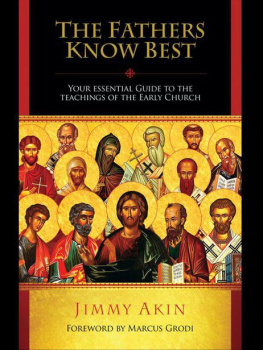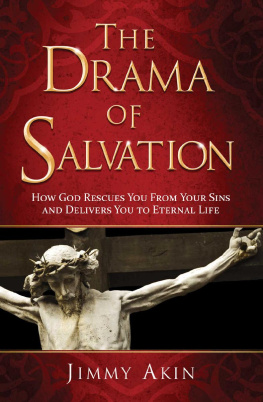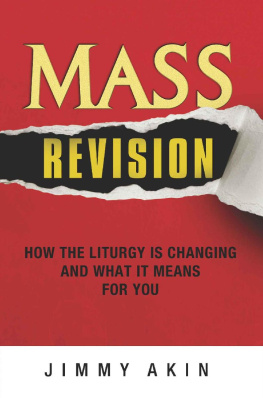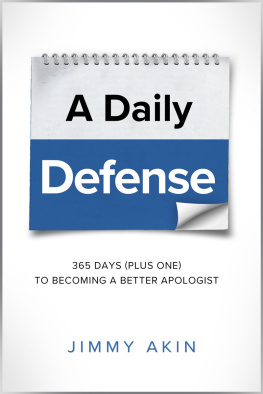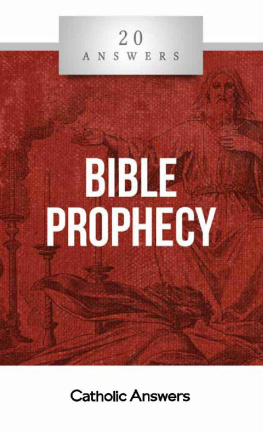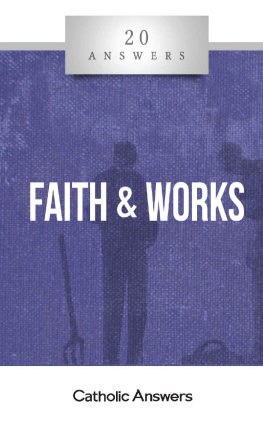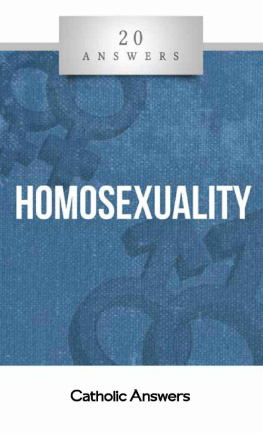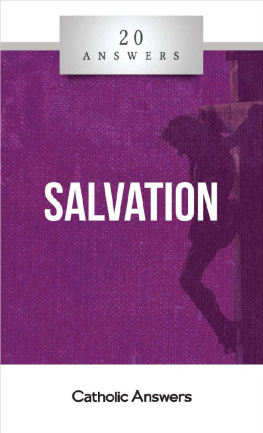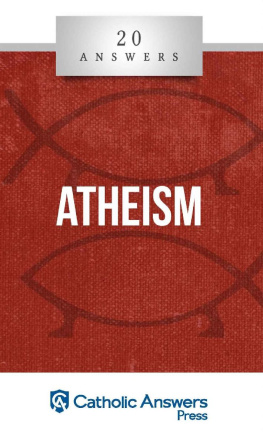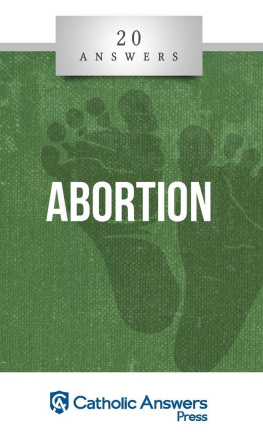Jimmy Akin - 20 Answers - Protestantism (20 Answers Series from Catholic Answers Book 34)
Here you can read online Jimmy Akin - 20 Answers - Protestantism (20 Answers Series from Catholic Answers Book 34) full text of the book (entire story) in english for free. Download pdf and epub, get meaning, cover and reviews about this ebook. year: 2019, publisher: Catholic Answers Press, genre: Religion. Description of the work, (preface) as well as reviews are available. Best literature library LitArk.com created for fans of good reading and offers a wide selection of genres:
Romance novel
Science fiction
Adventure
Detective
Science
History
Home and family
Prose
Art
Politics
Computer
Non-fiction
Religion
Business
Children
Humor
Choose a favorite category and find really read worthwhile books. Enjoy immersion in the world of imagination, feel the emotions of the characters or learn something new for yourself, make an fascinating discovery.

- Book:20 Answers - Protestantism (20 Answers Series from Catholic Answers Book 34)
- Author:
- Publisher:Catholic Answers Press
- Genre:
- Year:2019
- Rating:3 / 5
- Favourites:Add to favourites
- Your mark:
- 60
- 1
- 2
- 3
- 4
- 5
20 Answers - Protestantism (20 Answers Series from Catholic Answers Book 34): summary, description and annotation
We offer to read an annotation, description, summary or preface (depends on what the author of the book "20 Answers - Protestantism (20 Answers Series from Catholic Answers Book 34)" wrote himself). If you haven't found the necessary information about the book — write in the comments, we will try to find it.
Jimmy Akin: author's other books
Who wrote 20 Answers - Protestantism (20 Answers Series from Catholic Answers Book 34)? Find out the surname, the name of the author of the book and a list of all author's works by series.
20 Answers - Protestantism (20 Answers Series from Catholic Answers Book 34) — read online for free the complete book (whole text) full work
Below is the text of the book, divided by pages. System saving the place of the last page read, allows you to conveniently read the book "20 Answers - Protestantism (20 Answers Series from Catholic Answers Book 34)" online for free, without having to search again every time where you left off. Put a bookmark, and you can go to the page where you finished reading at any time.
Font size:
Interval:
Bookmark:
20 Answers
Protestantism
Jimmy Akin

20 Answers: Protestantism
Jimmy Akin
2019 Catholic Answers
All rights reserved. Except for quotations, no part of this book may be reproduced or transmitted in any form or by any means, electronic or mechanical, including photocopying, recording, uploading to the internet, or by any information storage and retrieval system, without written permission from the publisher.
Published by Catholic Answers, Inc.
2020 Gillespie Way
El Cajon, California 92020
1-888-291-8000 orders
619-387-0042 fax
catholic.com
Printed in the United States of America
978-1-68357-128-5
978-1-68357-129-2 Kindle
978-1-68357-130-8 ePub
Five hundred years ago, the West was torn apart. The event known as the Protestant Reformation shattered European Christendom, and we have been living with the results ever since. Bitter wars between Protestants and Catholics began, individuals were martyred, and hostilities ran high.
In recent times, however, passions have cooled, dialogue has begun, and the two communities have come to regard each other with new respect.
Still, for many Catholics, Protestantism can be a bewildering phenomenon. Its intense theological diversity means that there is no single set of official Protestant beliefs and practices. Neither is there a single way to approach or relate to Protestants, who may be openly friendly to Catholics or actively hostile.
The issue can be particularly pressing in the United States. Although most Christians worldwide are Catholic, most American Christians are Protestant, and Catholics are a minority. This makes it essential for American Catholics to have knowledge of Protestantism and how to respond to it.
I was raised in the Protestant community, but I became Catholic as an adult. In this short book, I will serve as your guide to the history of Protestantism, its major teachings and branches, and how we as Catholics can respond to and dialogue with our Protestant brethren.
Protestantism is a Christian movement that began in Europe in the early 1500s. It is customary to date the beginning of the Protestant movement to October 31, 1517, when the German monk Martin Luther issued a document known as the Ninety-five Theses .
According to a popular legend, he nailed this document to a church door in Wittenberg, Germanya common way of making documents public at the timethough we do not have evidence that this actually happened.
The Ninety-five Theses were a set of propositions that Luther wished to discuss in a local debate. They concerned the theology of indulgences, though he also discussed concepts such as confession, purgatory, and the authority of the pope.
The publication of the Ninety-five Theses led to a theological controversy. Luther and other early Protestants allied with certain European princes, and the controversy took on a political dimension that led to two centuries of warfare in a period known as the European Wars of Religion, with Catholics and Protestants battling each other.
The wars of religion ceased in the 1700s, but tensions remained high between Protestants and Catholics. In the twentieth century, relations between denominations warmed significantly, and today they are able to relate in a much more amicable way and largely regard each other as separated brethren but still brethren in Christ.
As Protestantism developed, it became theologically diverse, with different schools of theology springing up in different countries. Thus, after Lutheranism arose, additional schools such as Calvinism, Anglicanism, Methodism, and others came into existence. More recently, movements such as Pentecostalism and non-denominationalism have been added.
Despite this theological diversity, Protestants are united around two core principles expressed by the slogans sola scriptura (Latin, by Scripture alone) and sola fide (Latin, by faith alone). The first conveys the idea that only the Bible should have final authority in determining our religious beliefs; other sources, such as Tradition or the Magisterium (the teaching authority of the Church) are not to have such a role. The second conveys the idea that we are justifiedor put right with Godonly by faith in Jesus Christ, not by good works. These slogans are interpreted in different ways by the different Protestant theological traditions (see answers 5 and 6). Strikingly, neither is mentioned in the Ninety-five Theses.
Today, about 800 million Christians are Protestant, and they represent about 37 percent of the global Christian population (in contrast with Catholics, who represent about 50 percent, and Orthodox, who represent about 12 percent).
Every age in history has a mix of saints and sinners, and the Middle Ages (c. 500c. 1500) were no exception. The period is one of great accomplishments and triumphs, but it also contained great tragedies, including a worldliness and corruption that affected the Church.
In response, some individuals sought to break with this worldliness and reform unspiritual practices. Individuals who did this while staying within the bounds of Church teaching include St. Francis of Assisi (c. 11811226) and St. Catherine of Siena (13471380).
However, other reform-minded individuals went beyond criticism of the state of the Church in their day to also deny different aspects of its teachings. These included figures such as Peter Waldo (c. 1140c. 1205), John Wycliffe (c. 13251384), and Jan Hus (c. 13691415). They served as precursors of the Protestant Reformation, and movements springing from themthe Waldensians and the Hussite churchesare part of the Protestant community in Europe today.
Another factor contributing to the Reformation was the Western Schism (13781417). This was an event following the election of Pope Urban VI, when one and eventually two antipopes were elected. Different regions in Europe sided with different papal claimants, and a period of great confusion resulted. The situation was finally resolved at the Council of Constance (14141418), which elected Pope Martin V, effectively ending the schism. However, significant damage had been done to the Church and its reputation. In his Principles of Catholic Theology , Joseph Ratzinger explains:
For nearly half a century, the Church was split into two or three obediences that excommunicated one another, so that every Catholic lived under excommunication by one pope or another, and, in the last analysis, no one could say with certainty which of the contenders had right on his side. The Church no longer offered certainty of salvation; she had become questionable in her whole objective formthe true Church, the true pledge of salvation, had to be sought outside the institution. It is against this background of a profoundly shaken ecclesial consciousness that we are to understand that Luther, in the conflict between his search for salvation and the tradition of the Church, ultimately came to experience the Church, not as the guarantor, but as the adversary of salvation.
Technology also contributed to the Reformationspecifically, the invention of the movable-type printing press by Johannes Gutenberg (c. 14001468). Since writing was invented around 3400 B.C., books had to be handcopied by scribes, which meant an enormous investment of human time and energy. Consequently, books were fantastically expensive and could be owned only by the rich. For example, in the first century a single copy of the Gospel of Matthew would have cost the equivalent of more than $2,000. Prior to the invention of the printing press, only institutions, such as churches or monasteries, or very wealthy individuals could have afforded a complete Bible. That changed when Gutenberg produced the first printed Bible in 1455. The new movabletype system allowed Bibles to be printed for a fraction of the former cost, making them available to a much wider audience.
Font size:
Interval:
Bookmark:
Similar books «20 Answers - Protestantism (20 Answers Series from Catholic Answers Book 34)»
Look at similar books to 20 Answers - Protestantism (20 Answers Series from Catholic Answers Book 34). We have selected literature similar in name and meaning in the hope of providing readers with more options to find new, interesting, not yet read works.
Discussion, reviews of the book 20 Answers - Protestantism (20 Answers Series from Catholic Answers Book 34) and just readers' own opinions. Leave your comments, write what you think about the work, its meaning or the main characters. Specify what exactly you liked and what you didn't like, and why you think so.

